

— Blogs —
—Products—
 Consumer hotline +8618073152920
Consumer hotline +8618073152920 WhatsApp:+8615367865107
Address:Room 102, District D, Houhu Industrial Park, Yuelu District, Changsha City, Hunan Province, China
Product knowledge
Time:2024-09-22 16:28:09 Popularity:1649
Weather observation stations are facilities specifically designed to collect data, either automatically or manually, on various meteorological elements in the atmosphere. These elements include, but are not limited to, temperature, humidity, barometric pressure, wind speed, wind direction, precipitation, visibility, cloud cover, and solar radiation. They are essential for weather forecasting, climate research, disaster warning, and day-to-day operations in a wide range of industries and sectors.
The working principle of weather observation stations is based on the use of various sensors and instruments to monitor and record atmospheric conditions. The following are some of the common working principles:
1. Sensor monitoring: Weather stations use sensors to detect temperature, humidity, barometric pressure, wind speed, wind direction, precipitation, solar radiation and other meteorological elements.
2. Data Recording: The data collected by the sensors is recorded in data loggers, which can be electronic or mechanical.
3. Data Transmission: The recorded data can be transmitted to the meteorological center for processing and analysis by wired or wireless means. It can be sent automatically to the data center or stored locally and uploaded later. Modern observatories also support wireless transmission, such as GPRS and 4G/5G networks, to ensure the immediacy and continuity of data.
Weather observatories can be categorized based on different criteria, here are some common types of weather observatories:
- Ground-based meteorological observatories: Stations located on the ground, either automated or manually operated, used to collect meteorological data on the ground.
- Marine Weather Observatory: an observatory located on the ocean, which may be a fixed buoy, ship or other offshore platform.
- Alpine Meteorological Observatory: An observatory located in an alpine region for the study of alpine climate and environment.
- Polar meteorological observatories: observatories located in the Arctic and Antarctic for monitoring the special climatic conditions in the polar regions.
- Conventional meteorological observatories: stations that carry out daily observations of meteorological elements.
- Climate Observatory: Specialized for climate research, usually with a long history of observation.
- Special meteorological observatory: for specific meteorological phenomena or research purposes and the establishment of the observatory, such as wind energy observatory, lightning observatory and so on.
- Automatic meteorological observatory: completely controlled by computer systems, unattended, able to automatically collect and transmit data.
- Semi-automatic meteorological observation station: part of the observation is done manually, partly by automated equipment.
- Artificial meteorological observation station: all observations are done manually.
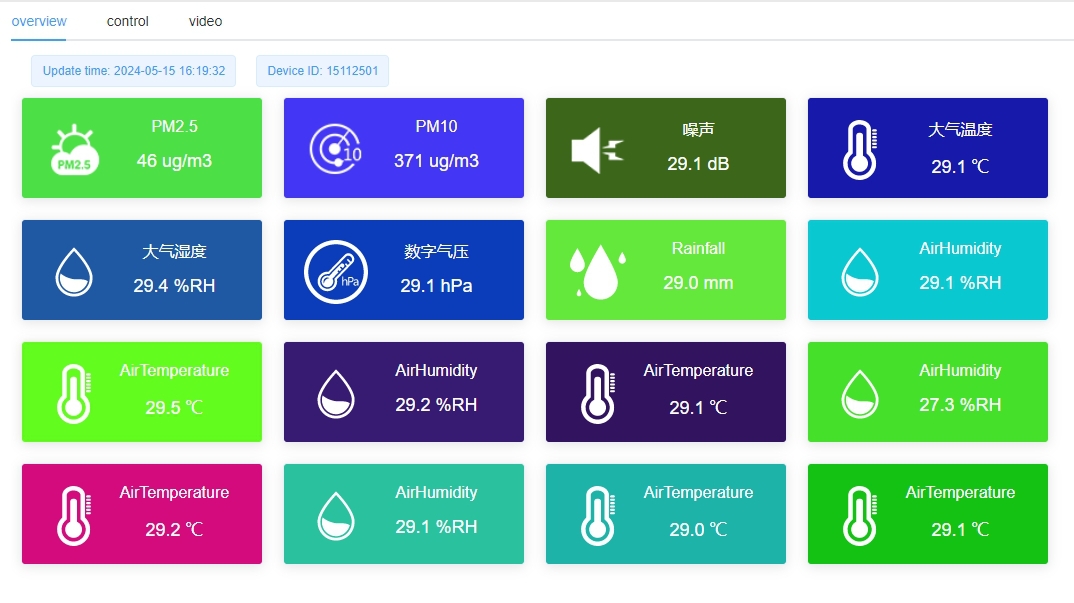
- Basic meteorological observatory: providing basic meteorological observation data, serving local and national meteorological forecasting.
- Agricultural meteorological observatories: Observatories specializing in agricultural services, providing meteorological information related to crop growth.
- Aviation meteorological observation stations: located at airports or other aviation facilities, providing meteorological services for aviation safety.
- Research meteorological observatories: Observatories used for scientific research, which may be equipped with more advanced instruments and equipment.
- Comprehensive meteorological observatory: observing a variety of meteorological elements, such as temperature, humidity, air pressure, wind speed, precipitation, etc.
- Specialized meteorological observation station: focusing on the observation of a particular meteorological element, such as radiation observation station, acid rain observation station, etc.
- Wired meteorological observation station: transmits data through wired network.
- Wireless meteorological observatory: data transmission through radio waves, satellites and other means.
These classifications are not independent of each other, and a weather station can belong to more than one type at the same time. For example, an automatic weather observation station located in an alpine area is both an alpine weather observation station and an automatic weather observation station.
Weather observation stations are equipped with a variety of equipment to collect, record, and analyze weather data. The following are some of the major devices:
1. Temperature sensors: used to measure air temperature and usually include dry bulb thermometers and wet bulb thermometers.
2. Humidity Sensors: Used to measure the relative humidity of the air.
3. Barometers: used to measure atmospheric pressure, either mercury barometers or electronic barometers.
4. Anemometers: used to measure wind speed, either cup anemometers or spiral anemometers.
5. Wind vane: used to indicate the direction of the wind.
6. Rain gauge: used to measure precipitation, usually a funnel shaped device that can record automatically or manually.
7. Radiometer: used to measure the amount of solar radiation, including direct and scattered radiation.
8. Sunshine meter: used to record the duration of sunshine.
9. Evaporation dish: for measuring evaporation.
10. Soil moisture sensor: to measure the moisture content of the soil.
11. Soil temperature sensor: for measuring soil temperature.
12. Visibility meter (visibility sensor): for measuring atmospheric visibility, either transmitted or scattered.
13. Weather radar: for monitoring precipitation and the development of weather systems.
14. Satellite Receiver: Used to receive data from meteorological satellites.
15. Lightning location system: for monitoring lightning activity.
16. Data logger: for storing data collected by sensors.
17. Communication equipment: used to transmit observation data to weather centers, which can be radio, satellite communication or network communication equipment.
18. Meteorological tower: used to install various sensors, especially when observations are required at different heights.
19. Automatic weather station controller: used to control the operation of the automatic weather station, including data acquisition, processing and transmission.
20. Meteorological observation software: used for processing and analyzing observation data.
These devices can be selected and configured according to the specific needs of the weather observation station. Automatic weather stations usually integrate a variety of sensors and data loggers to realize automated observation and data transmission.
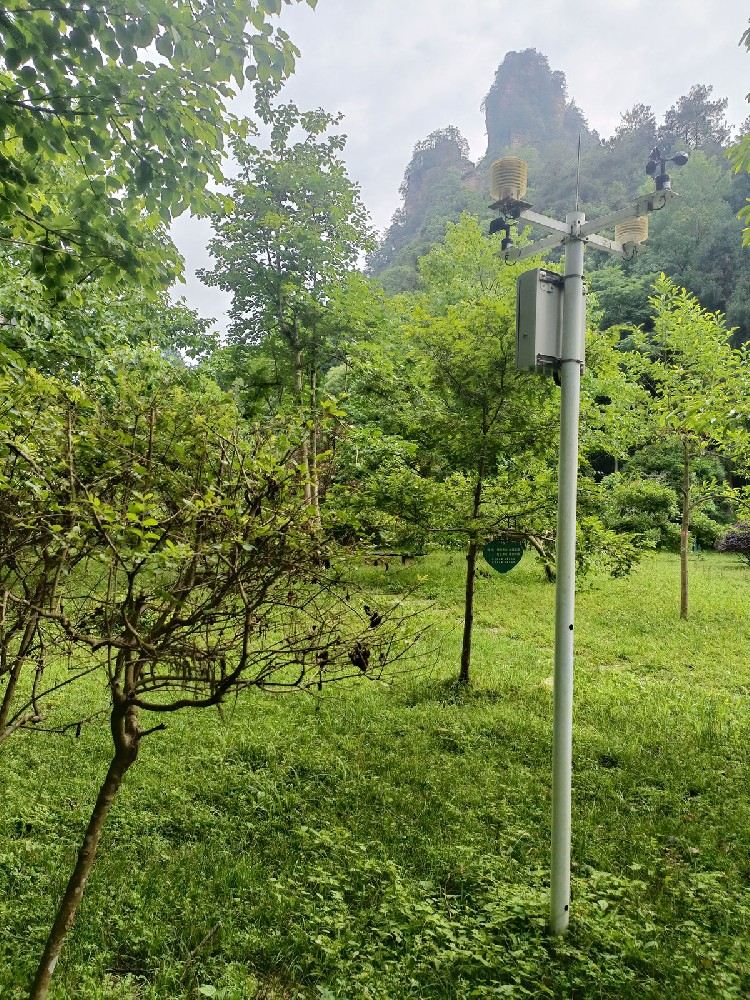
As an important part of the modern meteorological observation system, the weather observation station has multiple advantages and disadvantages. The following is a detailed analysis of its advantages and disadvantages:
1. Real-time accurate monitoring:
The meteorological observation station adopts advanced sensing technology and equipment, which can real-time and accurately monitor a variety of meteorological elements such as air temperature, humidity, wind direction, wind speed, air pressure, rainfall, sunshine, visibility and so on. This provides a rich and detailed data base for weather forecasting and climate research.
2. Automation and Intelligent:
The meteorological observation station realizes all-weather, unattended automated operation. Through the integrated intelligent control system, it is able to automatically collect, process and transmit data, which reduces manual intervention and improves observation efficiency and data accuracy. At the same time, the analysis system based on big data and artificial intelligence technology is able to analyze meteorological data in real time, generate early warning information in a timely manner, and provide scientific decision-making basis for disaster prevention and mitigation.
3. Networking and informatization:
Meteorological observation stations are closely integrated with the Internet, Internet of Things and other technologies to realize real-time transmission and sharing of data, and construct a meteorological information network with wide coverage and fast response speed. This provides comprehensive and three-dimensional meteorological information services for weather forecasting, climate assessment, environmental monitoring and so on.
4. Diversification and customization:
The design of meteorological observation stations is becoming increasingly diversified and customized, with large-scale comprehensive meteorological stations, small portable meteorological stations, and special meteorological monitoring equipment for special environments and industries, such as marine meteorological stations, mountain meteorological stations, transportation meteorological stations, agricultural meteorological stations and so on. This diversified design meets the different needs for meteorological data in different fields.
5. Promote disaster prevention and mitigation:
The real-time and accurate data obtained by meteorological observation stations are an important basis for making weather forecasts and climate predictions, providing reliable meteorological early warning information for government departments and the public, which is of great significance for flood and drought prevention, defense against typhoons, ice and snow disasters, and so on.
6. Support scientific research and technological innovation:
Meteorological observation stations provide valuable data support for meteorologists to study the pattern of climate change, explore the causes of extreme weather events and improve climate models, and at the same time promote the continuous innovation and development of meteorological detection technology, data processing and analysis technology.
7. Promote economic and social development:
Meteorological observation stations have far-reaching impacts on industries such as agricultural cultivation, fishery breeding, transportation, power supply, tourism and leisure. For example, accurate meteorological information guides farmers to sow and harvest at the right time; provides information on sea fog and waves for maritime navigation; ensures the safe operation of flights and highways; and assists wind and solar power stations to improve power generation efficiency.
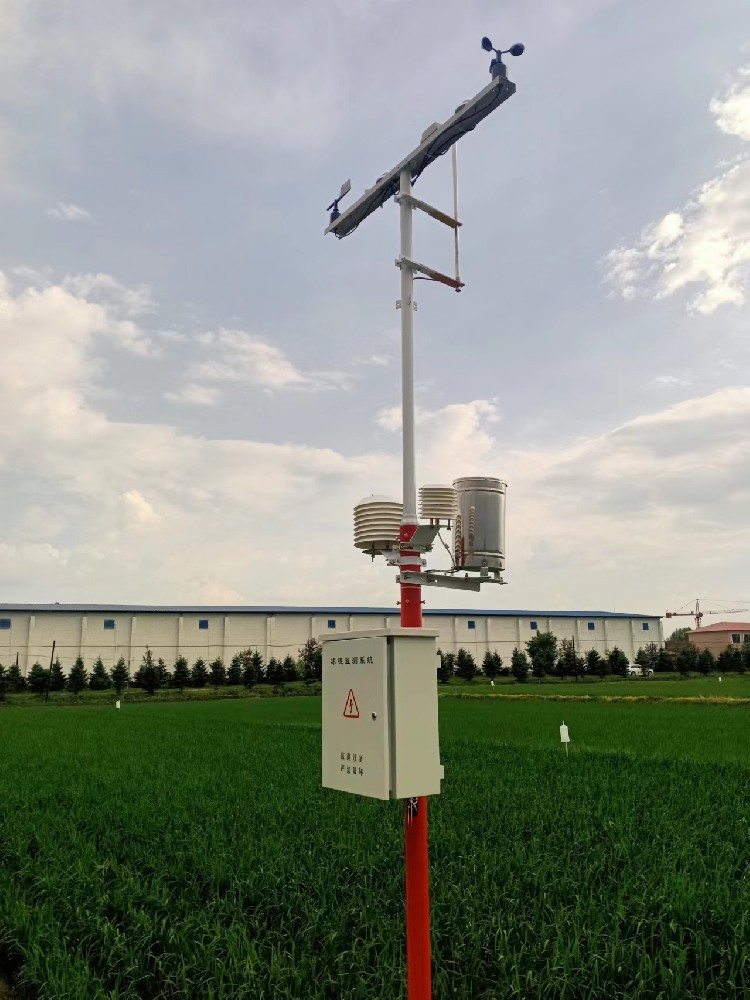
1. Safety hazards:
Most of the meteorological observation stations are located in remote areas or at sea, and it is difficult to maintain and update their equipment, and there are security risks. Especially in areas with extreme weather, such as alpine and high-temperature areas, the weather conditions have a greater impact on instruments and equipment, which can easily lead to failures.
2. Equipment aging problem:
Due to the long-term operation of equipment, some equipment may have aging or performance degradation problems, thus affecting the accuracy of observation data.
3. Maintenance difficulties:
The inconvenient transportation of meteorological observation stations in some areas makes it difficult for maintenance personnel to arrive in time, which leads to the prolongation of the repair cycle of the faults, and the observation data are affected.
4. Insufficient financial input:
Some grassroots meteorological departments have insufficient capital investment, which leads to difficulties in updating and maintaining the equipment to keep up with the demand, limiting the development of observation equipment.
5. Data transmission limitations (for wireless weather stations):
Wireless weather stations may be affected by weather, terrain and other conditions in transmitting signals, resulting in unstable signals or inaccurate data. In addition, limited storage capacity is also a potential problem for wireless weather stations, which need to be emptied manually when the data exceeds the storage capacity, otherwise it may lead to data loss.
6. Susceptible to interference (for wireless weather station):
Wireless weather stations are susceptible to interference from other wireless signals, such as indoor electrical appliances or other production equipment, which may affect signal stability and data accuracy.
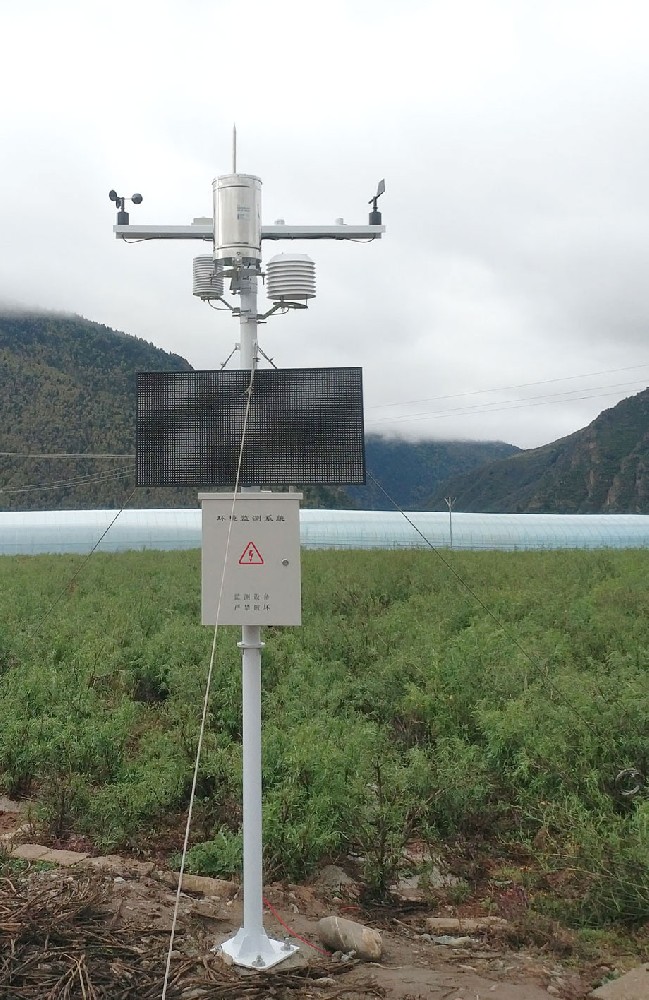
The roles and uses of weather observing stations are very wide-ranging, and the following are some of the main aspects:
1. Weather forecasting: providing real-time meteorological data for the production and updating of weather forecasts to help the public and the government make appropriate responses.
2. Climate research: Long-term collection of meteorological data is used for climate research to understand climate trends and changes.
3. Environmental monitoring: monitoring pollutants in the atmosphere, assessing air quality and providing data support for environmental protection.
4. Disaster early warning: Provide early warning information when extreme weather events (e.g. typhoons, floods, droughts) occur to reduce disaster losses.
5. Agriculture: Provide meteorological information needed for crop growth, such as temperature, precipitation and soil moisture, to help farmers make planting decisions.
6. Water resources management: monitoring precipitation and evaporation to provide basis for reservoir management, irrigation and rational allocation of water resources.
7. Transportation: Provide weather information for air, sea and land transportation to ensure transportation safety.
8. Education and scientific research: to provide students and researchers with actual observation data for teaching and research.
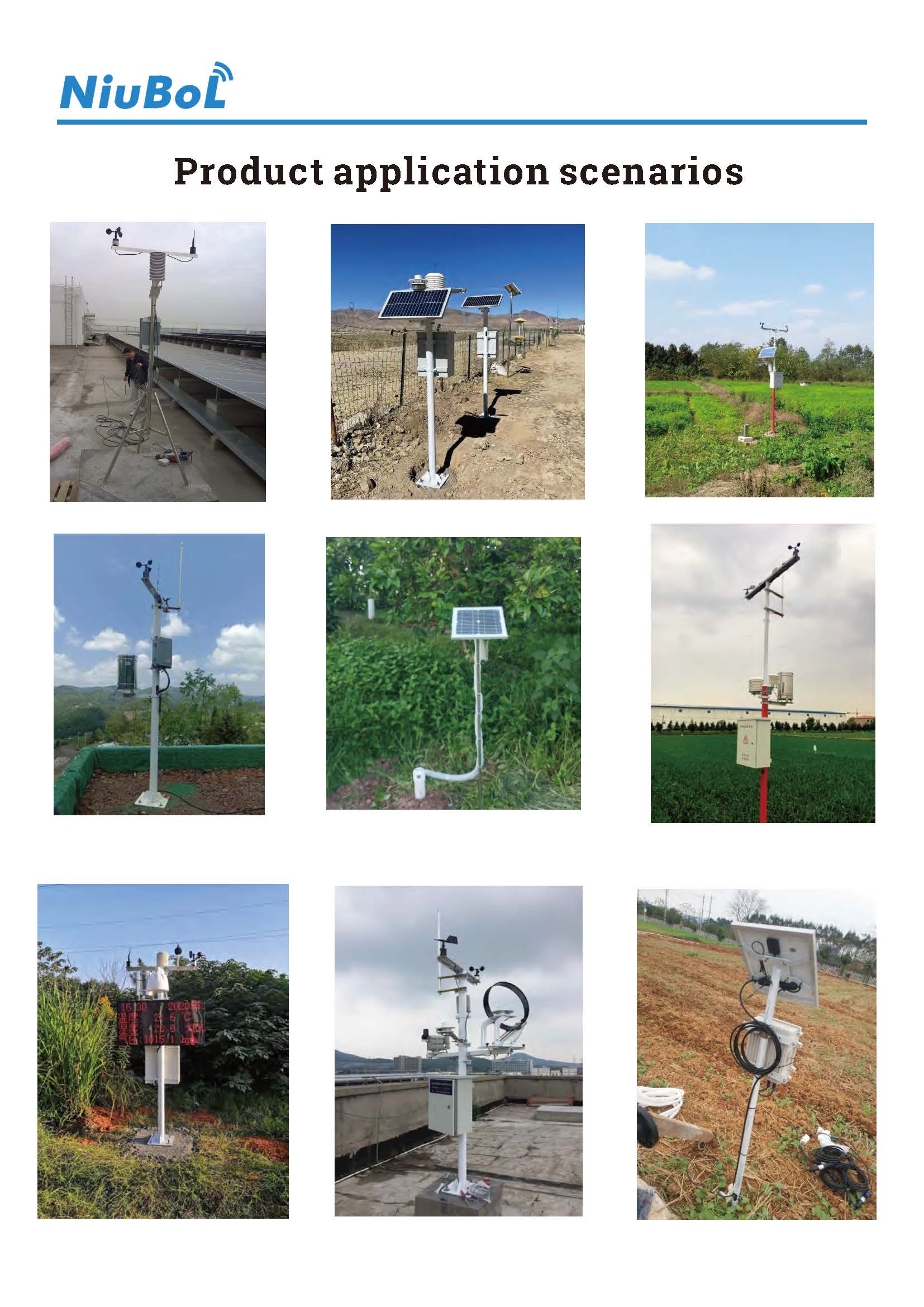
In short, weather observatories provide key information for weather forecasting, climate research, and disaster warning through real-time monitoring and recording of atmospheric data. Their automated, intelligent and networked features improve observation efficiency and data accuracy, and they are widely used in many fields such as agriculture, transportation and environment. Despite such shortcomings as safety hazards and ageing equipment, meteorological observation stations play an important role in disaster prevention and mitigation and in promoting economic and social development, and are an important part of the modern meteorological service system.
Related recommendations
Sensors & Weather Stations Catalog
Agriculture Sensors and Weather Stations Catalog-NiuBoL.pdf
Weather Stations Catalog-NiuBoL.pdf
Related products
 Combined air temperature and relative humidity sensor
Combined air temperature and relative humidity sensor Soil Moisture Temperature sensor for irrigation
Soil Moisture Temperature sensor for irrigation Soil pH sensor RS485 soil Testing instrument soil ph meter for agriculture
Soil pH sensor RS485 soil Testing instrument soil ph meter for agriculture Wind Speed sensor Output Modbus/RS485/Analog/0-5V/4-20mA
Wind Speed sensor Output Modbus/RS485/Analog/0-5V/4-20mA Tipping bucket rain gauge for weather monitoring auto rainfall sensor RS485/Outdoor/stainless steel
Tipping bucket rain gauge for weather monitoring auto rainfall sensor RS485/Outdoor/stainless steel Pyranometer Solar Radiation Sensor 4-20mA/RS485
Pyranometer Solar Radiation Sensor 4-20mA/RS485
Screenshot, WhatsApp to identify the QR code
WhatsApp number:+8615367865107
(Click on WhatsApp to copy and add friends)
